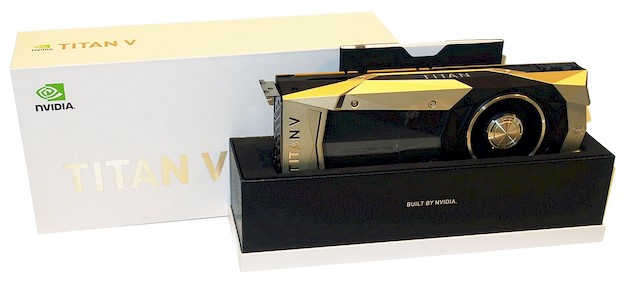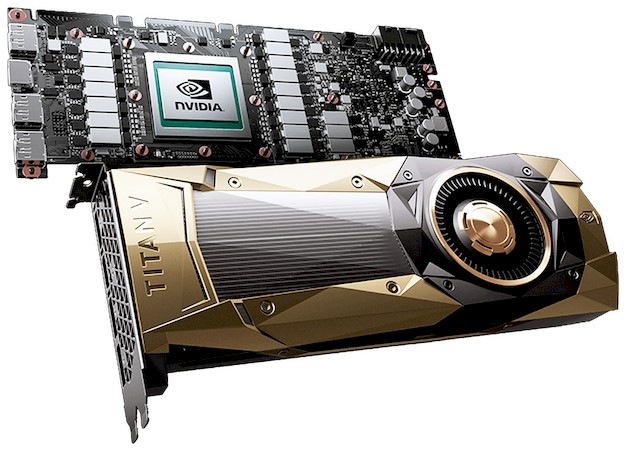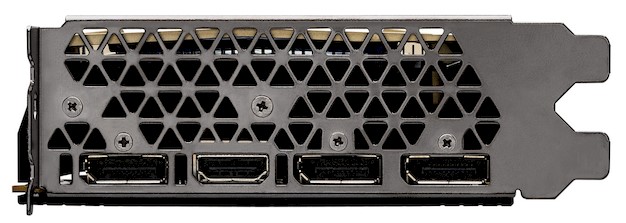NVIDIA TITAN V Review: Volta Compute, Mining, And Gaming Performance Explored
NVIDIA's GV100-Based TITAN V, What Makes It Tick
Although NVIDIA officially unveiled its Volta-based GV100 GPU over seven months ago, and an unwitting intern may have leaked pictures of the card we’re going to show you here today shortly thereafter, the NVIDIA TITAN V featuring the GV100 GPU began shipping just this past week. The NVIDIA TITAN V targets a very specific audience and is designed for professional and academic deep learning applications, which partly explains its lofty $3,000 price tag.
Unlike NVIDIA's previous-gen consumer flagship, the TITAN Xp, the TITAN V is clearly not designed for gamers. But since it features NVIDIA’s latest GPU architecture and potentially foreshadows next-year’s consumer-targeted Voltas, we thought it would be interesting to take the TITAN V for a spin with various applications and games, to see just what the card could do. As you’ll witness, the TITAN V is a beast, especially when it comes to scientific computing applications.
|
| NVIDIA TITAN V | ||
| Graphics Processing Clusters | 6 | |
| Streaming Multiprocessors | 80 | |
| CUDA Cores (single precision) | 5120 | |
| FP64 Cores (double precision) | 2560 | |
| Texture Units | 320 | |
| ROP Units | 96 | |
| Base Clock | 1200MHz |
|
| Boost Clock | 1455MHz |
|
| Memory Clock (HBM2) | 850MHz | |
| L2 Cache Size | 4608KB | |
| Total Video Memory | 12,288MB HBM2 | |
| Memory Interface | 3072-Bit |
|
| Total Memory Bandwidth | 652.8 GB/s |
|
| Texture Filtering Rate (Bilinear) | 384 GigaTexels/sec |
|
| Fabrication Process | 12 nm |
|
| Transistor Count | 21.1 Billion | |
| Connectors | 3 x Display Port, 1 x HDMI | |
| Form Factor | Dual Slot |
|
| Power Connectors | One 8-Pin, One 6-Pin | |
| Recommended Power Supply | 600 Watts |
|
| Thermal Design Power (TDP) | 250 Watts |
|
| Thermal Threshold | 91°C |
|
| Price | $2,999 - Find It At Amazon | |
The massive, 21.1B transistor GV100 GPU powering the TITAN V has a base clock of 1,200MHz and a boost clock of 1,455MHz. The GPU is manufactured at 12nm, which allows NVIDIA to pack in a huge number of transistors – the GV100 has nearly double the number of transistors as the 16nm GP102.
At its default clocks, the TITAN V offers a peak texture fillrate of 384 GigaTexels/s, which is only slightly higher than a TITAN Xp. The 12GB of HBM2 memory on-board the GV100 is linked to the GPU via a 3072-bit interface and offers up 652.8 GB/s of peak bandwidth, which is about 100GB/s more than a TITAN Xp. Other features of the GV100 include 5,120 single-precision CUDA cores, 2,560 double-precision FP64 cores, and 640 Tensor cores, which can offer massive performance improvements in Deep Learning workloads, to the tune of up to 110TFLOPs. The cores are arranged in 6 GPCs, with 80 SMs. There are also 320 texture units on board, and 96 ROPs, which is right in-line with the GP102.
Save for the gold tint on the faceted elements of its fan shroud, the TITAN V has a similar aesthetic to NVIDIA's TITAN Xp and GeForce GTX 1080 Ti Founder's Edition cards. It has a faceted fan-shroud with black and gold elements and a see-thru window at the center which reveals and array of thin-fins below. The backside of the card is adorned with a rigid, black back-plate, though it is not modular like the ones on the TITAN Xp or 1080 Ti, which allow for more space between adjacent cards used in SLI mode. Why not? Because the TITAN V doesn’t have SLI connectors, so how it behaves in a multi-GPU setup is still unknown. We have a question out to NVIDIA asking for clarification there.
The TITAN V is outfitted with a die cast aluminum body which is machine finished and heat treated for additional strength and rigidity. The top edge of the card features an embossed, gold “TITAN” logo and the thermal solution is similar to the TITAN Xp's. There is a relatively large vapor chamber on-board, topped with an array of copper heatsink fins, and a radial fan that draws in air from inside the chassis and vents it out though the back. At the rear of the card, a second, small heatsink helps wick heat away from the VRM.
The TITAN V features a 16-phase digital power array for its GPU and memory and the card has a 250W TDP, which is typical of NVIDIA’s high-end TITANs. Like the TITAN Xp, the TITAN V requires two supplemental power connectors, one 6-pin and one 8-pin.
The outputs on the TITAN V are just like the last few high-end offerings from NVIDIA and consist of a trio of full-sized DisplayPorts and an HDMI 2.0b output. The DisplayPorts enable support for 4K displays at 120Hz, 5K displays at 60Hz, and 8K displays at 60Hz (using two cables and multi-stream transport). Up to four display outputs can be used simultaneously for multi-monitors, VR setups, and the like.












